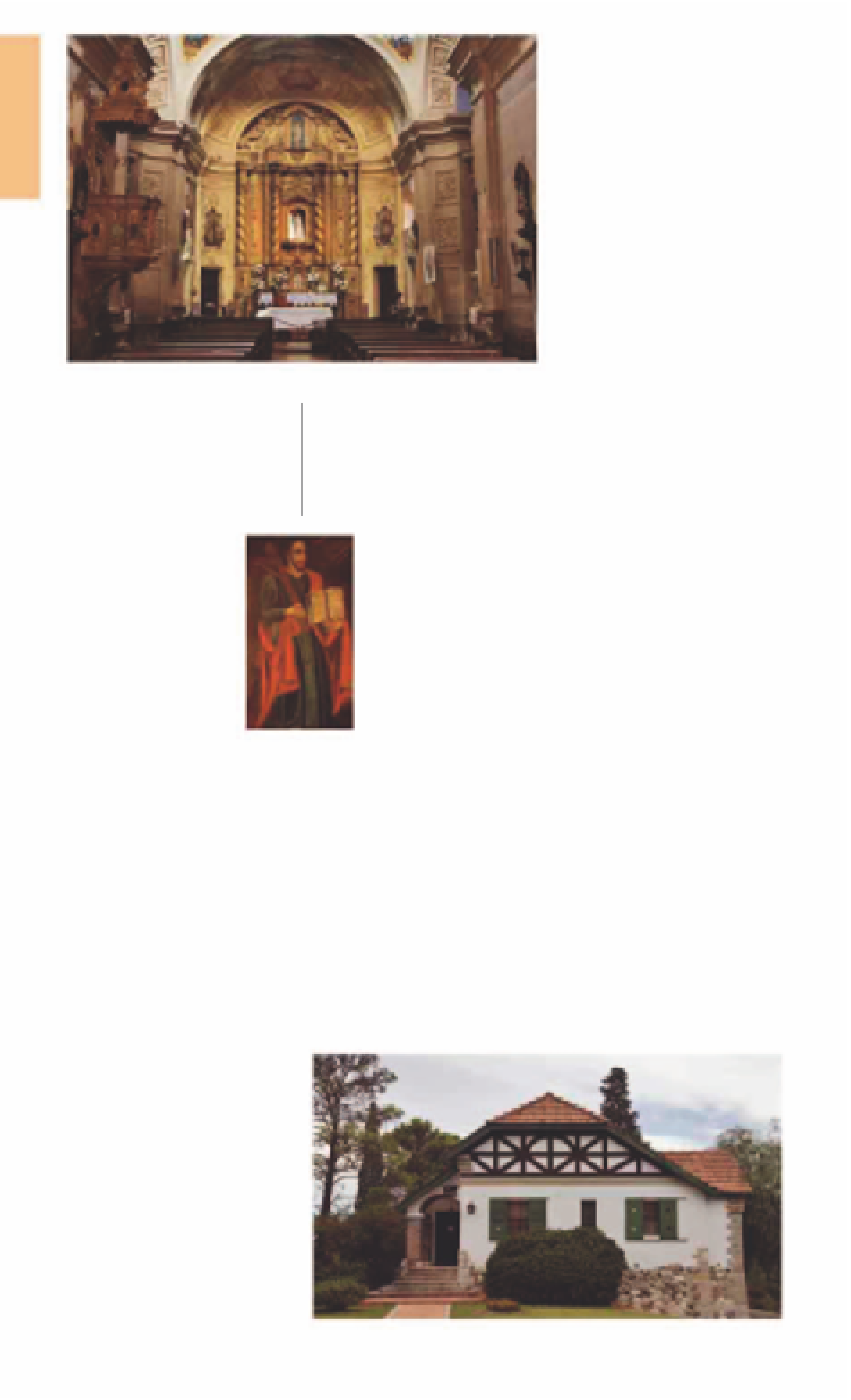Travel Reference
In-Depth Information
composers, lived in Argentina
until his death in 1946. From
1942 onwards he lived in Alta
Gracia in a small house which
has been converted into this
excellent museum.
The Museo Manuel de Falla
re-creates the composer's life,
showcasing his music and vari-
ous musical influences with
exhibits that include his library,
his piano, and his personal
letters. Although Manuel de
Falla chose to live in Alta Gracia
because of its reputation for
fresh mountain air, one of the
displays is the machine used to
roll his cigarettes. Piano and
chamber music recitals are
occasionally held in the concert
hall in the garden.
The altar and pews of Iglesia Parroquial Nuestra Señora de la Merced
2
Alta Gracia
Road map
B2. 25 miles (40 km) SW of
Córdoba.
*
43,000.
@
n
(0347)
428-128.
∑
altagracia.gov.ar
R
Iglesia Parroquial Nuestra
Señora de la Merced
Plaza Manuel Solares.
Te l
(03547)
421-303.
8
Jan-Feb: 9:30am-8pm
Tue-Sun & hols; Mar-Dec: 9am-1pm,
3-7pm Tue-Fri, 9:30am-12:30pm,
3:30-6:30pm Sat, Sun, & hols.
5
Jan-Feb: 8pm Mon−Sat,
10am Sun; Mar-Dec: 6pm
Mon−Sat, 10am & 6pm Sun.
∑
museoliniers.org.ar
Designed by Andrés
Blanqui, this is one of
Argentina's finest extant
churches of the late
Italian Baroque style. Its
curved outer walls
resemble a cross, and
the highly ornamented
interior has a carved wooden
pulpit and a columned altar.
E
Museo del Che Guevara
Avellaneda 501.
Te l
(03547) 428-579.
Open
Jan-Feb: 9am−8pm daily; Mar-
Dec: 2-6:30pm Mon, 9am-6:30pm
Tue-Sun.
&
free Wed.
8
by prior
arrangement.
7
limited.
∑
altagracia.gov.ar/museos/che
Known as Villa Beatriz, this
pretty mock-Tudor house was
one of several dwellings
occupied by the Guevara family
during the 1930s. In 2001, it was
reopened as a museum, or
more as a shrine, dedicated to
the revolutionary Che Guevara.
Although they do not
provide an in-depth analysis of
his life and ideals, the displays
feature an interesting collection
of family photos, Cuban bank
notes, school report cards,
letters from Che to his favorite
aunt, and editions of books by
authors favored by the
adolescent Guevara, including
Freud, Baudelaire, Pablo Neruda,
and Jules Verne.
In the prosperous
agricultural belt of the
Calmuchita Valley is
the small, historic
town of Alta Gracia.
It was founded by the
Jesuits on land granted
to them in the 17th
century by the colonial
government. The
Jesuits built a large
ranch, part of a
network of similar sites
developed to help
fund the Universidad
Nacional de Córdoba, one of
Latin America's oldest univer-
sities. The Alta Gracia estancia,
which fell into disuse after the
Jesuits' expulsion in 1773, was
named a UNESCO World
Heritage Site in 2000. It is now
the
Museo Históríco Casa del
Virrey Liniers
.
Alta Gracia came into
prominence in the 1920s and
30s when it attracted wealthy
Argentinians in search of fresh
air and second homes. The
most famous of these were
the families of Ernesto Che
Guevara and Spanish
composer Manuel de Falla.
To the north of the city is the
Tajamar, an artificial lake built
by the Jesuits in 1653 and
probably the first of its kind in
the Americas. Located here is
the town's clock tower, built in
1938 to commemorate Alta
Gracia's 350th anniversary.
Religious painting,
Museo Liniers
E
Museo Manuel de Falla
Pellegrini 1011.
Te l
(03547) 429-292.
Open
Jan-Feb: 9am-8pm daily; Mar-
Dec: 2-6:30pm Mon, 9am-6:30pm
Tue-Sun.
&
free Wed.
8
call ahead.
∑
altagracia.gov.ar/cultura
Fleeing the Franco regime in
1939, Manuel de Falla, one of
Spain's greatest modern
Home of Spanish composer Manuel de Falla, now a museum
For hotels and restaurants see pp278-83 and pp288-99



































